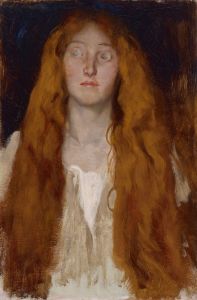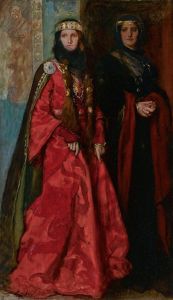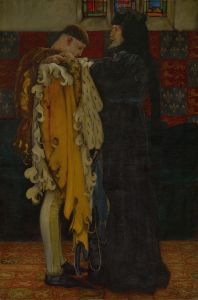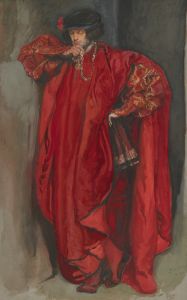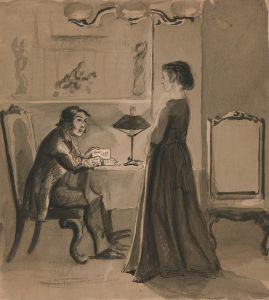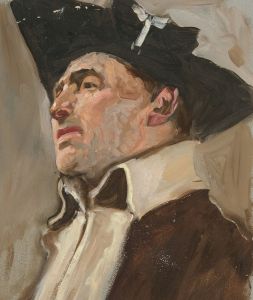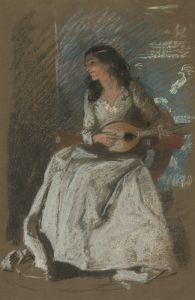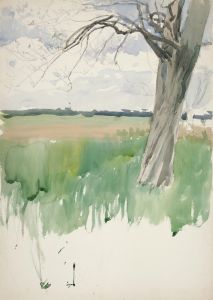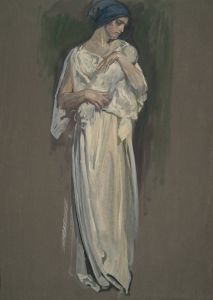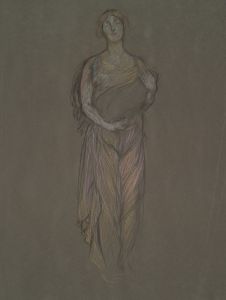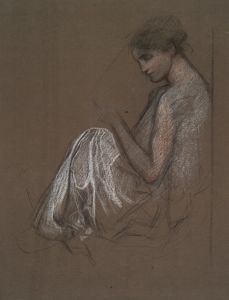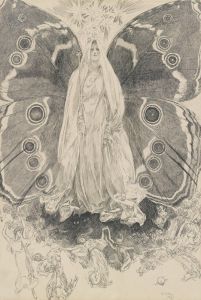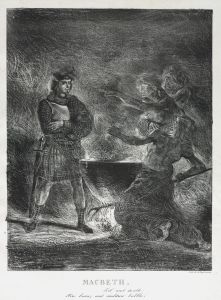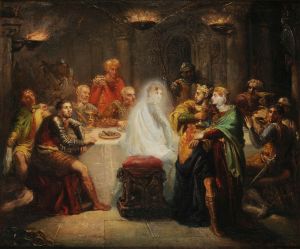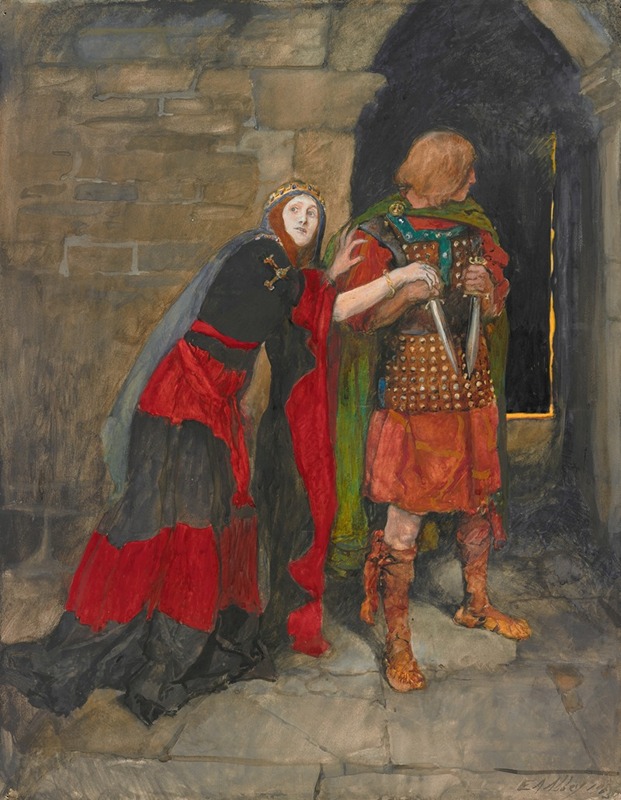
Lady Macbeth; ‘“Infirm of purpose! Give me the daggers…,’ Act II, Scene II, Macbeth
A hand-painted replica of Edwin Austin Abbey’s masterpiece Lady Macbeth; ‘“Infirm of purpose! Give me the daggers…,’ Act II, Scene II, Macbeth, meticulously crafted by professional artists to capture the true essence of the original. Each piece is created with museum-quality canvas and rare mineral pigments, carefully painted by experienced artists with delicate brushstrokes and rich, layered colors to perfectly recreate the texture of the original artwork. Unlike machine-printed reproductions, this hand-painted version brings the painting to life, infused with the artist’s emotions and skill in every stroke. Whether for personal collection or home decoration, it instantly elevates the artistic atmosphere of any space.
Edwin Austin Abbey's painting "Lady Macbeth; ‘“Infirm of purpose! Give me the daggers…,’ Act II, Scene II, Macbeth" is a notable work that captures a pivotal moment from William Shakespeare's tragedy "Macbeth." Abbey, an American artist known for his illustrations and paintings, created this piece as part of his broader interest in Shakespearean themes, which he explored extensively throughout his career.
The painting depicts a scene from Act II, Scene II of "Macbeth," where Lady Macbeth takes charge after her husband, Macbeth, has murdered King Duncan. The quote "Infirm of purpose! Give me the daggers…" is spoken by Lady Macbeth as she chastises Macbeth for his hesitation and fear following the murder. In this moment, she assumes control, taking the daggers from Macbeth to plant them on the guards, thereby implicating them in the king's murder. This scene is crucial as it highlights Lady Macbeth's determination and pivotal role in the plot to seize the throne.
Abbey's interpretation of this scene is characterized by its dramatic intensity and attention to detail. The painting captures the psychological tension and moral ambiguity of the characters. Lady Macbeth is portrayed with a commanding presence, reflecting her dominance and resolve. The use of lighting and shadow in the artwork enhances the ominous and foreboding atmosphere, emphasizing the gravity of the crime that has just been committed.
Edwin Austin Abbey was born in 1852 in Philadelphia, Pennsylvania, and gained prominence as an illustrator before transitioning to painting. He was particularly renowned for his works based on literary subjects, especially those of Shakespeare. Abbey's Shakespearean paintings were well-received, and he became associated with the depiction of historical and literary themes. His works were characterized by meticulous attention to historical detail and a strong narrative quality.
Abbey's interest in Shakespeare was part of a broader cultural fascination with the playwright during the 19th century, a time when Shakespeare's works were being re-evaluated and celebrated in both Europe and America. Abbey's paintings contributed to this revival by bringing Shakespearean scenes to life with vivid imagery and emotional depth.
The painting "Lady Macbeth; ‘“Infirm of purpose! Give me the daggers…,’ Act II, Scene II, Macbeth" is part of Abbey's larger body of work that includes numerous other Shakespearean scenes. His paintings were exhibited widely and contributed to his reputation as a leading artist of his time. Abbey's work remains significant for its artistic merit and its role in popularizing Shakespearean themes in visual art.
In summary, Edwin Austin Abbey's painting of Lady Macbeth is a compelling visual interpretation of one of Shakespeare's most famous plays. It captures the essence of the characters and the dramatic tension of the scene, showcasing Abbey's skill in bringing literary subjects to life through art.





